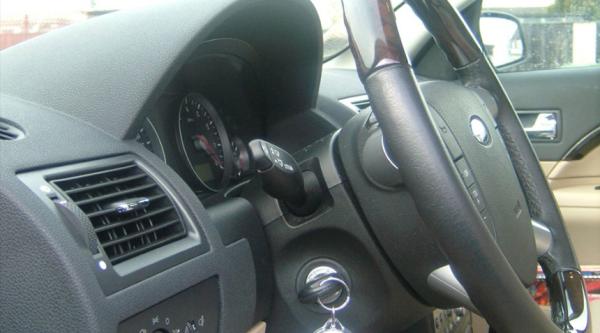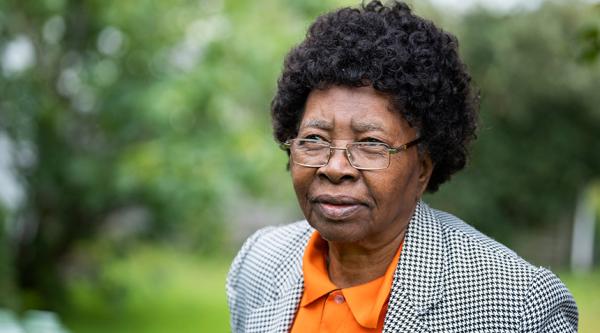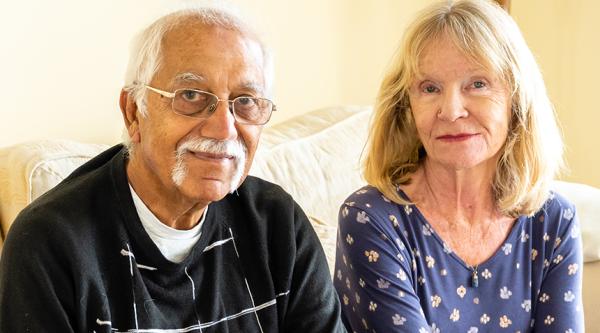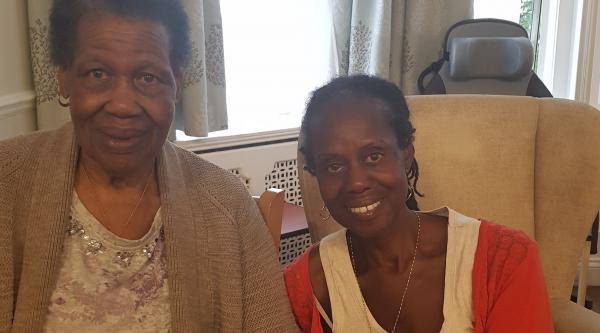How to keep driving after a dementia diagnosis
If a person wants to keep driving after being diagnosed with dementia, they must take certain steps and let DVLA/DVA decide. Read more about this and find out what happens if DVLA/DVA decides a person with dementia can keep driving.
- Driving and dementia
- The law on driving and dementia
- You are here: How to keep driving after a dementia diagnosis
- When DVLA/DVA decides that a person with dementia must stop driving
- Giving up driving after a dementia diagnosis
- Driving and dementia – useful organisations
Driving and dementia factsheet
Step one: Tell DVLA/DVA
The first step for someone who is diagnosed with dementia and wants to keep driving is to tell DVLA/DVA about their diagnosis straightaway.
The person should give their:
- full name
- address
- date of birth
- driver number on their driving licence (if known).
They can get in touch with their licensing agency by post, on the phone or online (see ‘Driving and dementia – other resources’ for full contact details).
Step two: Fill in a questionnaire and allow DVLA/DVA to contact your doctor
DVLA/DVA will then send the person a questionnaire and a request to get medical reports from their doctor. If you live in England or Wales, this questionnaire can also be downloaded from the GOV.UK website .
Once the person has returned it, DVLA/DVA will speak to their doctor.
Step three: DVLA/DVA decides
Based on the doctor’s report, medical advisers at DVLA/DVA will decide if the person can keep driving.
There are several possible results at this stage. DVLA/DVA may:
- renew the person’s licence, usually for one year (see below)
- cancel or ‘revoke’ it straightaway
- ask for more information, such as more medical details
- ask the person to take an on-road driving assessment before making a decision. This is the least common of the possibilities.
In all cases, DVLA/DVA will tell the person in writing.
What happens if DVLA/DVA decides a person can keep driving?
If DVLA/DVA decides that a person with dementia can keep driving, they will send them a new driving licence. It will usually be valid for one year. For people with early dementia, this may be up to three years.
The person's condition must be reviewed every time they renew their licence. They won’t have to pay a fee for this and DVLA will send a reminder letter.
It is a good idea for those close to the person with dementia to stay aware of their driving skills.
The person should also have regular check ups with their doctor to see how their dementia is progressing. The effect of dementia on the person’s driving should be considered at these check ups or at other healthcare appointments, where appropriate.
How can people with dementia reduce risks when driving?
While a person with dementia may be able to drive safely, driving may feel a bit more difficult than before.
It may be easier to stay safe on the road if they:
- don’t go for long periods without driving – to keep their skills and stay confident
- keep to short and familiar routes at quiet times of the day – so they are less likely to get lost or stuck in heavy traffic
- drive in daylight – with good road and weather conditions
- drive without distractions, like the radio – for better focus
- only drive when they feel fully awake and well.
Even if DVLA/DVA decides the person can keep driving, it may be helpful for them to plan ahead for when they must stop completely. Talking to others about this and making some changes to their usual arrangements can make it much easier to stop driving when the time comes.








DVLA/DVA will ask someone to take a driving assessment if they are not sure if the person can still drive safely.
The assessment will be at one of 20 approved driving assessment centres around the UK, or at one of their related ‘satellite’ centres (see Driving Mobility centres under ‘Driving – other resources’).
DVLA/DVA will refer the driver to a centre near their home and will pay for the assessment.
Some people choose to have an assessment without DVLA/DVA asking them to. A person may do this if they have a valid licence but want some extra advice or teaching. In these cases, the person must get in touch with the centre directly and pay for the assessment. Prices vary but the average cost is between £70–90.
The person being assessed should go to the centre with another person who is able to drive or accompany them home using alternative transport, if necessary. This is in case the assessment finds that the person is unsafe to drive. The person with dementia must also bring their driving licence and any glasses they need for driving.
The assessment is not like a learner's driving test. It is carried out by a specialist occupational therapist and an advanced driving instructor. They assess how much the person’s dementia is affecting their driving and whether they can drive safely and comfortably.
The assessment is done in a supportive way and is understanding of the bad habits that many drivers pick up, such as not indicating or turning the steering wheel while parked before moving off. The assessors will work with the person to help them keep driving if this can be done safely.
The driving assessment takes about two hours and generally includes the following steps:
1. Questions and written test
The person with dementia answers questions about their medical and driving history, and any driving problems they may have. After this, they do a short written test of mental abilities.
2. Tests for steering and braking
Reaction time and limb strength are tested on a special static ‘rig’. This is a car with the steering wheel and foot pedals linked to a computer. The person’s eyesight is also checked.
By this stage, a few people will be found to be unsafe to drive and the assessment will end here.
3. A drive on public roads along a set route
This is the main part of the assessment. It is the best test of a person’s driving ability.
This part happens in a dual-control car, which has a brake on the passenger’s side as well as the driver’s side. Some centres have a private road that the person drives around first. This helps them get used to the car and allows the instructor to check that they are safe to go on the public road.
The person drives with the advanced driving instructor in the passenger seat and the occupational therapist in the back.
4. Results
Back at the centre, the assessors tell the driver what they have found.
If the decision is that the person can drive safely, they’ll be advised how to do this confidently.
If the assessors decide that the person is not safe to drive, the information and advice they receive will be about other options. In this case, someone else will need to drive the person home if they came to the centre by car.
If DVLA/DVA asked for the assessment, the centre will send them a report. The licence holder can ask the agency for a copy of this.